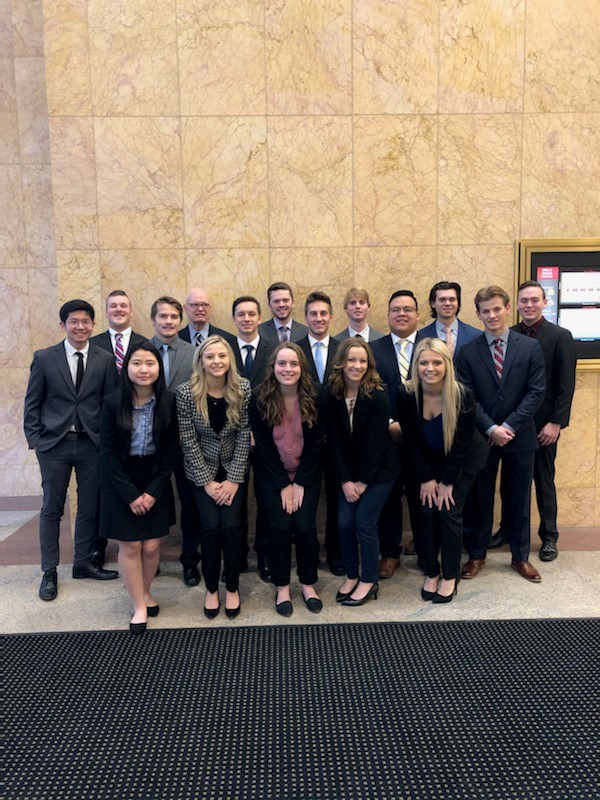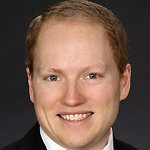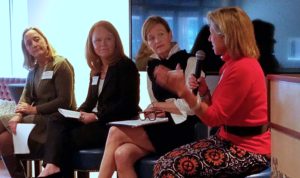
The University of Wisconsin-Eau Claire Financial Management Association traveled to Minneapolis to visit U.S. Bank, Wells Fargo, UBS and Target on Friday, November 15. CFA Society Minnesota worked with Wells Fargo and U.S. Bank to put together an outstanding day filled with real-life experiences. We had an incredible time and look forward to this event every year. Special thank you to both of these organizations for hosting our group and for teaching us about the different career paths in the finance industry.
Wells Fargo
Wells Fargo broke the ice with a heated game of financial family feud between two groups of Eau Claire students. The family feud was geared toward topics in wealth management. After playing financial family feud, there was a panel discussion with Kashi Yoshikawa, CFA, Kevin Ario, CFA, and Tasha Alexander. Joshua Witherspoon led the panel discussion and the students were able to ask any questions they would like. The finance leaders touched on client relationships, client retention, industry certifications, specialized services, D.I.S.C. personality model, and team building. They also explained their career paths and the different roles in the industry of wealth management. Special thank you to Joshua Witherspoon, Brittany Jacks & Ploy Pattinson for organizing this visit.
Speakers:
Kevin Ario, CFA: National Investment Management and Implementation Director
Kashi Yoshikawa, CFA: Regional Investment Manager
Tasha Alexander: Senior Private Banker
U.S. Bank
U.S. Bank hosted our group in a large training room. We first heard from an HR representative, Cindy Kuehl, who went over an organization overview of the company. We also heard from six other finance employees:
Aimee Brantseg: Private Wealth Advisor
Lisa Erickson, CFA: Senior Vice President and Head, Traditional Investments Group
Preeti Higgins: Private Banker
Leisl Kistow, CFIRS: Head of Wealth Management Trust Advisory Center & SVP
Kate Lyons, CFA, CAIA: Vice President, Senior Portfolio Manager
Leslie Penrith: Vice President, Marketing
Leela Rao: Vice President, Director of Strategic Initiatives
They discussed each of their positions, what a typical day looks like for them and the challenges they face within their roles followed by a Q&A session. This was a very beneficial presentation and provided insight into the industry of wealth management. It was great to hear from all the professionals and to learn more about the different finance positions in their organization. Special thank you to Lisa Erickson and Kate Lyons for putting this visit together for us.









 On April 16, CFA Society Minnesota hosted a panel discussion with prominent women in the financial services industry. Abbot Downing’s Deputy Chief Investment Officer, Carol Schleif, CFA moderated the event as panelists shared their unique experiences, concerns over the industry’s lack of diversity and career advice to young professionals.
On April 16, CFA Society Minnesota hosted a panel discussion with prominent women in the financial services industry. Abbot Downing’s Deputy Chief Investment Officer, Carol Schleif, CFA moderated the event as panelists shared their unique experiences, concerns over the industry’s lack of diversity and career advice to young professionals.